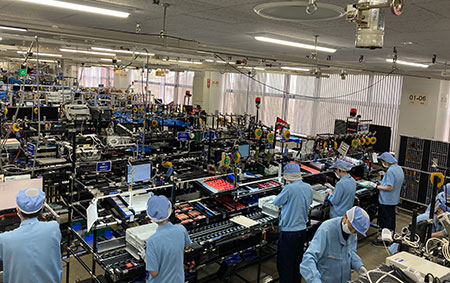NEC establishes 100% renewable energy plant in Fukushima
Aiming
to live harmoniously with the earth to secure the future, the NEC Group is
focusing on "Environment" as one of the pillars of its NEC
2030Vision. Sustainability is an essential component of a company's
environmental strategy. And this is not just about the environment, it's also
about sustainability of business. Turning environmental initiatives into
business—NEC has made significant progress in realizing this concept with sales
as the starting point. One recent achievement in this endeavor is the
construction of a 100% renewable energy factory. NEC is working with strong
partners, NTT and NTT Anode Energy, to pursue a new initiative towards a
decarbonized society.
"NTT
and NEC collaborate to promote a decarbonized society." This initiative,
announced on April 6, 2023, will establish the first factory for NEC Platforms
to use 100% renewable power (to start by the first quarter of FY2024). It will
also be the first time for the NTT Group to directly supply renewable power to
a client.
The key point of this first-time endeavor is that
the power is also renewable energy, so it is entirely eco-friendly. The factory
produces state-of-the-art products that significantly reduce the burden on the
environment. This framework, which is aimed at promoting a decarbonized
society, including supply chains, is in line with the environmental strategies
of both the NTT Group and the NEC Group.
Let's take a closer look. NTT Anode Energy, the
energy company of the NTT Group, newly installed a solar power plant for NEC to
supply power to NEC Platforms Fukushima Plant. The plant in Fukushima, using
100% renewable power, will manufacture equipment for 5G base stations and other
networking equipment. In the future, it will also manufacture equipment
compatible with NTT's next-generation optical communication platform, IOWN
(stands for Innovative Optical & Wireless Network). IOWN, a cutting-edge
technology from NTT, is attracting attention because it drastically reduces
power consumption by replacing semiconductor electronic circuits with optical
circuits.































Leave A Comment